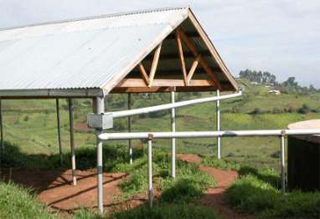Classification of Systems
We can simply classify most systems by the amount of
'water security' or 'reliability' afforded by the system.
There are four types of user regimes listed below:
Occasionalwater is collected occasionally with a small storage capacity, which
allows the user to store enough water for say, one or two days. This type of system
is ideally suited to a climate where there is a uniform rainfall with very few dry
days during the year and where an alternative water source is available nearby. - water is collected occasionally with a small
storage capacity.
Intermittentthis type of pattern is one where the requirements of the user are
met for a part of the year. During a single long rainy season most or all of the
users' needs are met. During the dry season, an alternative water source has to be
used. Usually, a small or medium size storage vessel is required. - the requirements of the user are met for a
part of the year.
Partialthis type of pattern provides for partial coverage of the water
requirements of the user during the whole of the year. For example if a family
gathers rainwater to meet the drinking or cooking needs, while other needs, such
as bathing and washing, are met by a water source with a lower quality. - partial coverage of the water requirements of the
user during the whole of the year.
Fullwith this type of system the total water demand of the user is met for the
whole of the year by rainwater only. In areas where other sources are unavailable
this is sometimes the only option available. A strict water management strategy is
required when such a system is used to ensure that the water is used carefully and
will last until the following wet season. - the total water demand of the user is met.









